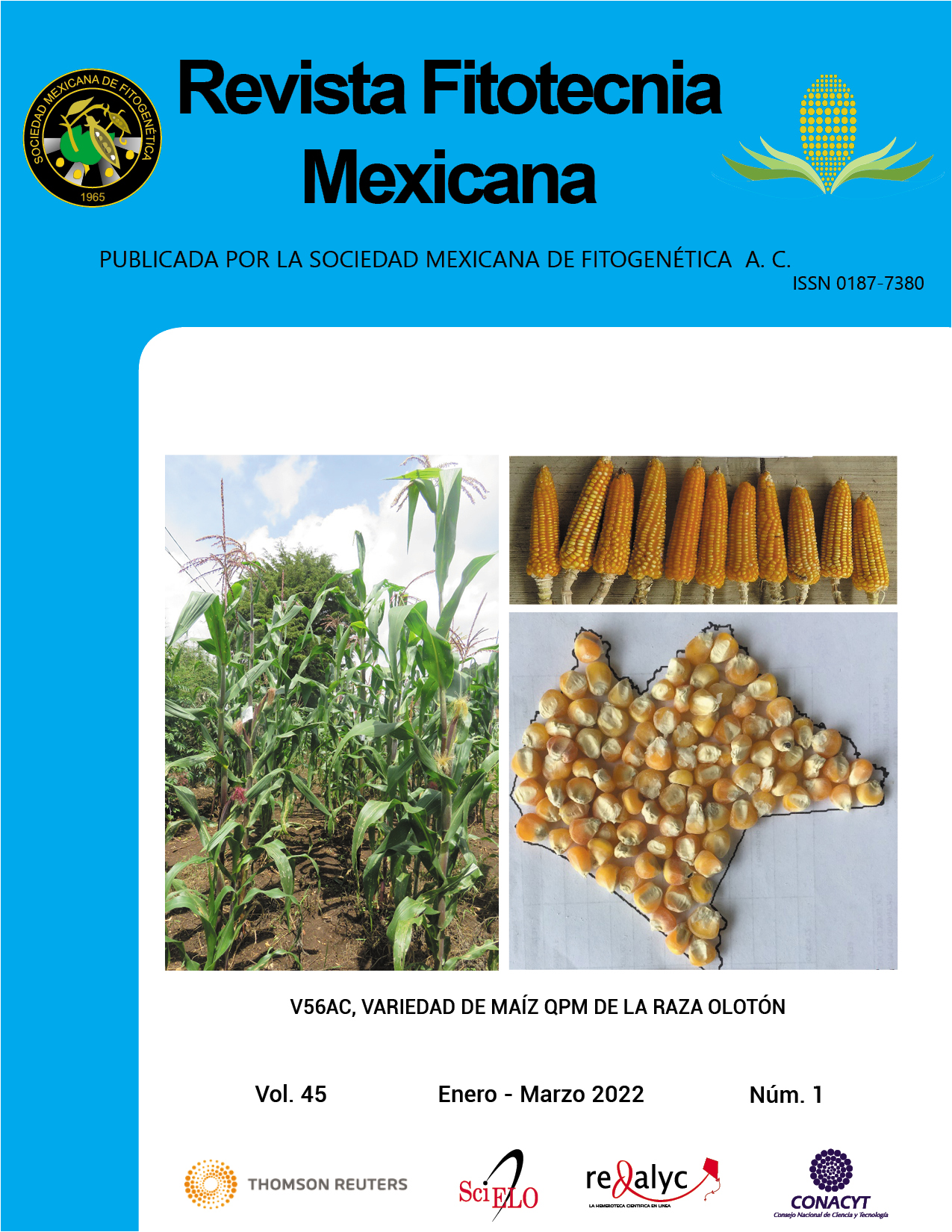PHENOTYPIC AND GENETIC VARIABILITY INDUCED BY GAMMA IRRADIATION IN WILMAN LOVEGRASS Eragrostis superba (PEYR.)
Main Article Content
Abstract
Wilman lovegrass [Eragrostis superba (Peyr.)] is a species used worldwide to revegetate rangelands; however, it has a low nutritional quality and a poor tolerance to water stress; thus, it can be a candidate for plant breeding. In this study, the morphological, nutritional, stomatal and molecular diversity induced y gamma irradiation was evaluated in Wilman lovegrass. Seed of the common variety was exposed to gamma radiation at doses of 100, 200, 300, 450, 600, 900, 1400 and 2000 Gy; in addition, non-irradiated seed was used as a control. Seed of the different treatments was used to produce plants in a greenhouse, which were evaluated through traits related to forage quality and water stress tolerance. The first generation of plants derived from mutagenic treatments (M1) was selected based on agronomic traits. The selected promissory mutants were then nutritionally, stomatally and molecularly characterized. All the possible selected mutants presented lower lignin content (P ≤ 0.01) compared to the common variety. The 200-3 and 200-7 promissory mutants showed higher protein content (P ≤ 0.01) at maturity stage. Also, significant differences (P ≤ 0.01) were found between putative mutants and control plants in stomatal density and stomatal area. The molecular analysis revealed significant differences (P ≤ 0.05) between the control genotype and the promissory mutants 200-3, 600-3, and 600-6, which presented genetic distances of 0.41, 0.42 and 0.35 (Dice’s coefficient) in relation to the control genotype, respectively. The phenotypic and genetic variability induced by gamma irradiation allowed to select the first generation of putative mutants with outstanding agronomic traits, nutritional value and stomatal characteristics.

